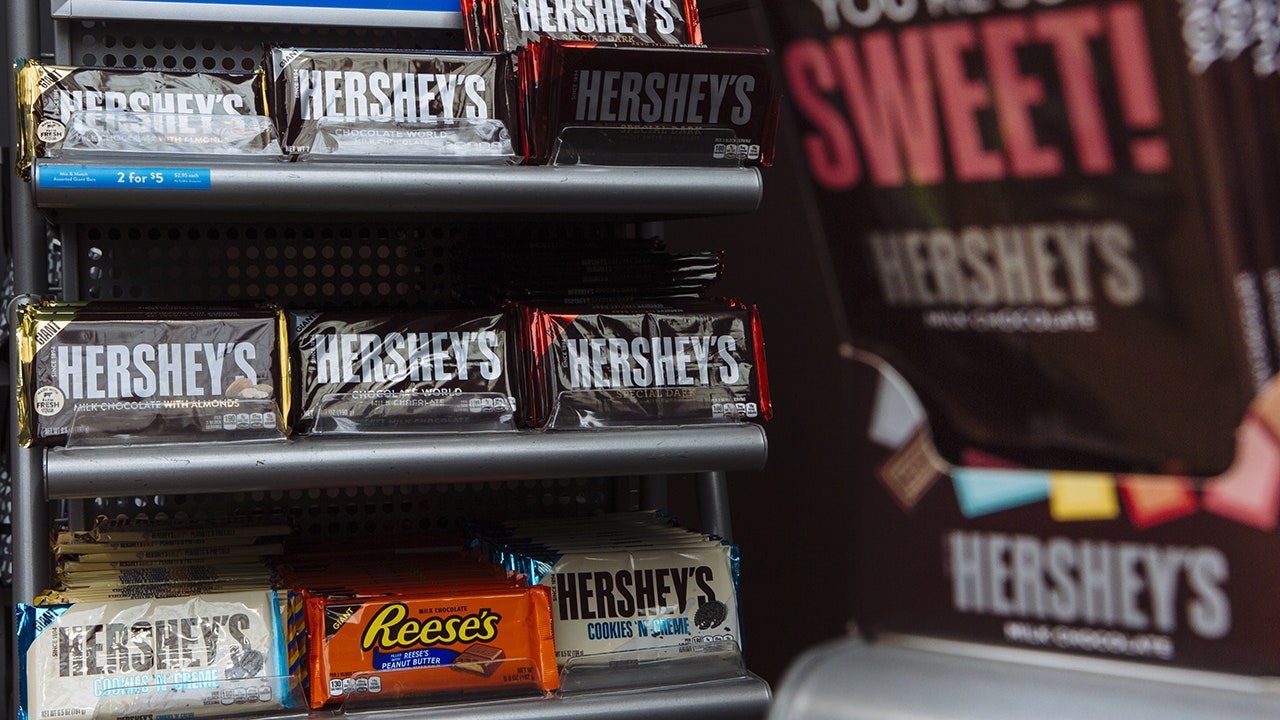The sweet taste of chocolate is facing a bitter reality as Hershey and several other renowned chocolate makers prepare to implement price increases averaging double digits. This surge is largely attributed to skyrocketing cocoa costs, a significant contributor to the rising prices of chocolate products. Factors such as severe weather conditions and diseases affecting cocoa crops in West Africa have led to a tumultuous cocoa supply, causing manufacturers to pass those costs onto consumers.
In a bid
Did You Know
At birth, a baby panda is smaller than a mouse.
?
AD
to maintain some customer goodwill, Hershey has committed to keeping Halloween candy prices unchanged for the current year, providing a small solace to fans eager for their festive treats. However, this goodwill gesture may not mask the broader trend within the industry. Fellow premium brands like Lindt are also experiencing pressure from high cocoa prices, raising their outlook despite experiencing a decline in volumes sold due to increased prices. The impact of these increases on consumer behavior remains to be seen, but it’s clear that many chocolate enthusiasts may need to adjust their budgets.
As cocoa prices hover near record highs, the landscape of the chocolate industry is poised for significant changes. This evolving economic reality forces companies to reassess their pricing strategies, positioning themselves for a future where chocolate may become a luxury rather than an everyday indulgence. With rising ingredient costs affecting the entire market, consumers are left grappling with the possibility of costlier treats, making each chocolate bar a more precious commodity amidst uncertain times.
Q&A (Auto-generated by AI)
What factors drive cocoa price fluctuations?
Cocoa prices fluctuate due to various factors, including supply and demand dynamics, weather conditions, and geopolitical events. For instance, adverse weather in West Africa, which produces a significant portion of the world's cocoa, can lead to reduced yields. Additionally, global demand for chocolate continues to rise, putting pressure on supply. Economic factors, such as inflation and currency exchange rates, also play a role, as they can affect production costs and pricing strategies for companies like Hershey.
How do tariffs affect chocolate prices?
Tariffs can impact chocolate prices by increasing the cost of imported ingredients or finished products. However, in the case of Hershey's recent price hikes, the company explicitly stated that the increases were not related to tariffs or trade policies. Instead, they cited rising cocoa costs as the primary reason for the price adjustments. This indicates that while tariffs can influence prices, other factors, such as raw material costs, often have a more direct effect.
What impact do price hikes have on consumer behavior?
Price hikes typically lead consumers to reassess their purchasing habits. When chocolate prices rise, some consumers may reduce their consumption, switch to cheaper alternatives, or even forego purchases altogether. This can particularly affect seasonal sales, such as Halloween, where price sensitivity is heightened. Companies like Hershey must balance price increases with consumer expectations to maintain market share and brand loyalty. If consumers perceive the price increase as unjustified, it could lead to long-term changes in buying behavior.
How has cocoa pricing changed over the years?
Cocoa pricing has seen significant volatility over the years, influenced by various factors including climate change, supply chain disruptions, and market demand. Recent trends indicate that cocoa prices have risen sharply, with reports of increases exceeding 178% in some instances. This rise is attributed to a combination of supply shortages, increased production costs, and a growing global appetite for chocolate. Historical data shows that cocoa prices have fluctuated widely, often in response to global economic conditions and agricultural challenges.
What are the environmental impacts of cocoa farming?
Cocoa farming has several environmental impacts, including deforestation, biodiversity loss, and soil degradation. The expansion of cocoa plantations often leads to the clearing of forests, which disrupts ecosystems and contributes to climate change. Additionally, the use of pesticides and fertilizers can contaminate local water supplies and harm wildlife. Sustainable cocoa farming practices are being promoted to mitigate these impacts, focusing on agroforestry and organic farming methods that can help preserve the environment while maintaining production.


















